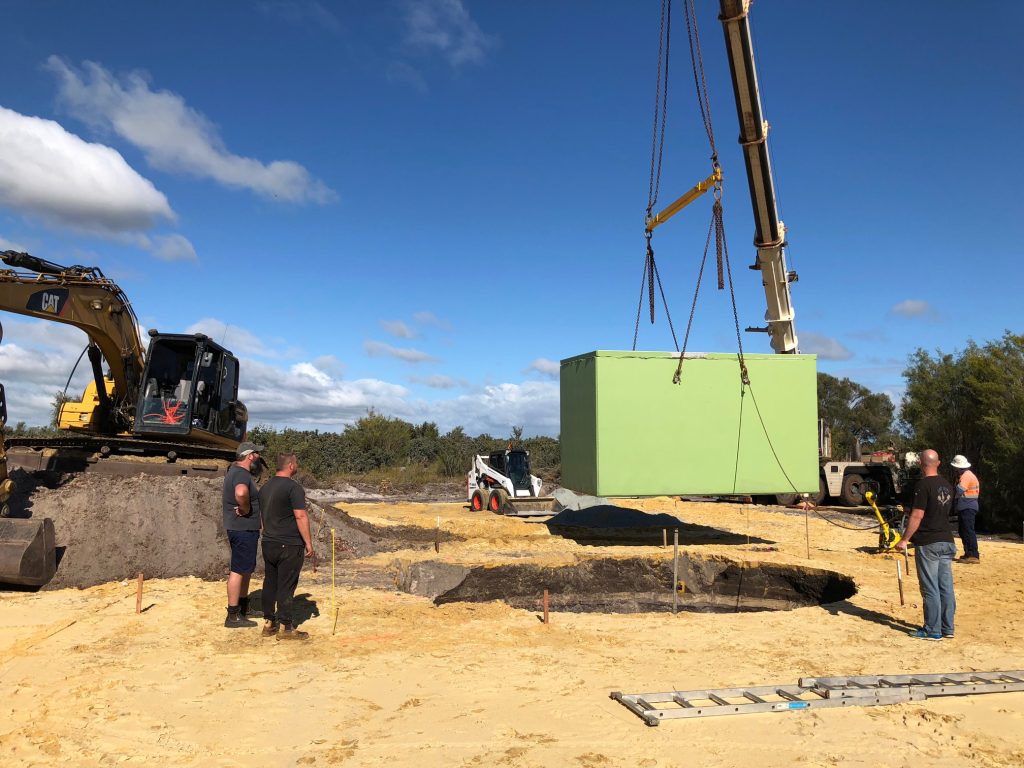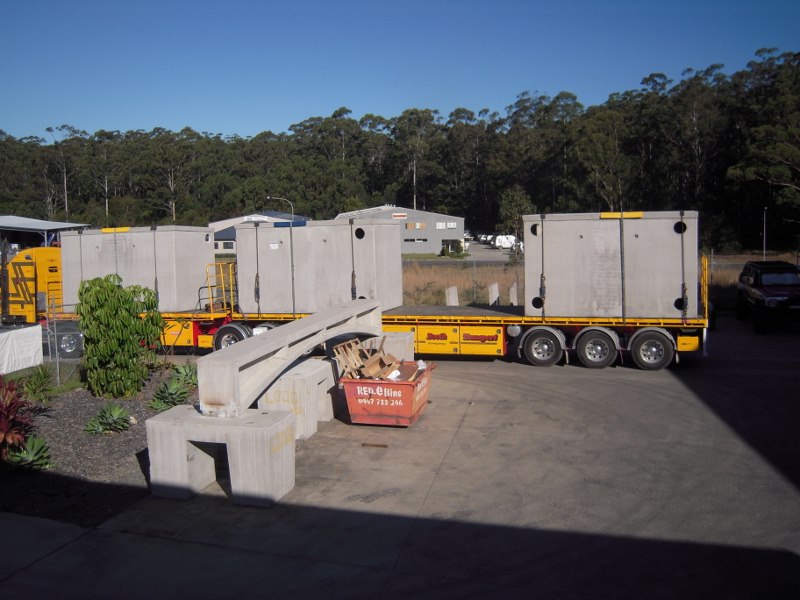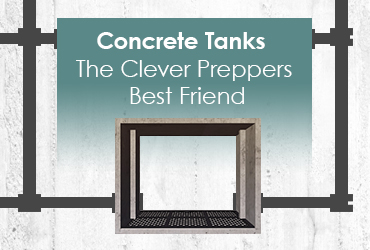Preparing for the future is important for you and your family – and today, it seems more vital than ever to start taking heed of warnings about climate change and natural disasters.
Our concrete tanks are built to withstand the ferocity of outback wildfires. As our climate changes, wildfires have become more common and will continue to rage during the hotter seasons, making a concrete water tank even more of a household necessity to keep you and your family safe. It’ll also help keep your property protected with its own supply of water for dousing the fires.

But what if something worse than a bushfire occurs? Water stored in our concrete underground water tanks can help to keep flames at bay, but in the event of a natural disaster or a man-made global disaster, they have other potential uses, too. In fact, so-called ‘preppers’ are already using underground tanks to prepare for future disasters.
Who are “preppers”?
‘Preppers’ are those people who are already taking their future survival and comfort into their own hands. Not content with the idea that everything will probably work out for the best, or that they will be looked after by emergency services, preppers hoard and collect necessities and other items that will enable them to live self-sufficiently for long periods of time.
Their main aim is to ensure that they and their families have enough food, drinking water and other amenities, like first aid kits, safety gear and medical equipment, to help them not only stay alive during adverse conditions, but to live, survive and thrive.
Preppers are mostly concerned with events that will cause their whole country or continent to be, in effect, ‘wiped out’ and/or impossible to escape from, or an impending apocalypse. Looking at it realistically, this could happen in any number of ways, including:
- Irreversible climate change
- Nuclear war
- Deadly pollution levels
- Natural disaster – such as a super volcano eruption, hurricanes or tsunami
- Pandemic
- Terrorist attack
- Economic collapse.
While an apocalypse is unlikely to happen, preppers believe that there is still a chance that it could happen at any time – and that this chance, however small, means that preparing is not only sensible, but essential.
Above: These tanks are Dangerous Goods Storage Tanks, which are ideal for storing legally-acquired weapons and ballistics if you have a license to own them.
Using Your Versatile Tanks Concrete Tank to Prep
If you’re wondering how a concrete tank could help you prepare for an uncertain future, there are plenty of examples of how they can be designed to accommodate several features. In fact, some of our most popular models can be easily configured to provide the perfect space to begin your prepping.
Use Your Tank to Store Food in Controlled Temperatures
Preppers love canned and bottled goods because they have a very long shelf life. Have you ever heard of tinned soup being dubbed ‘apocalypse-proof’? Well, it sort-of is! Pasteurised inside their containers and completely shelf-stable, they have extra-long shelf lives and are easy to store.
With an underground tank, you can store other things too. Many of our customers order tanks to use as wine cellars because they keep the air cool and stable inside no matter what the weather’s like on the surface. With this in mind, you can use your tank to keep freeze-dried foods and other semi-perishable items like grains, flours and even milk powders for longer periods of time, thanks to their dry, ambient temperatures.
Other goods to consider storing in your tank to prepare for the future are:
- Water – one gallon per person per day is a good rule of thumb
- Dried and cured meats
- Rice
- Pasta
- Flour
- Coffee beans
- Seasonings and spices – you don’t want to live on bland pasta for months at a time!
- Long-life sauces
- UHT milk and juices
- Dried fruits and vegetables
- Pickled vegetables.
Using Your Tank as a Safety Vessel
As well as providing you with the space to stockpile vital supplies, your underground concrete tank can be used as a safety vessel if the worst comes to the worst.
When you install your tank, make considerations such as:
- Do I want to include an air filter, so the tank is viable to potentially live inside?
- Would I prefer to section off parts of the tank as separate areas for storage?
- How could I enter the tank and how easy would it be to get out again?
- How can I regulate the temperature?
- Should I install a generator for power?

While our generic tanks aren’t designed for inhabitation, we can work with you to design an underground tank that will accommodate your needs, ensuring you have a safe space to ‘bail out’ (escape) to when needed.
Items to collect now to get ready for TEOTWAWKI (The End Of The World As We Know It)
If you’re thinking of joining the prepper ranks, here are some of the best things you can start gathering now to make prepping easier. Then once your tank is fully installed, you can transfer it all there!
Brown Glass Storage Jars
Brown or green glass is better for storing bottled, pickled or preserved foods in because the light can’t easily permeate the glass to damage the contents.
Water Filters
After all, if you’re able to get out to find water, you need to make sure it’s not going to make you sick.
Vegetable and Herb Seeds
Once the worst is over, you might want to start growing your own food again. Packing fruit and veg seeds is a great idea for morale too, as it shows you’re hoping for the future!
Concentrated Soap
Just because it’s the end of the world, doesn’t mean you have to give up on personal hygiene! There are soaps you can buy that don’t require more than a dash of water to lather up. Plus, keeping clean is good for morale!
Bin Bags
Keep tidy, get rid of your waste or even use them as makeshift waterproof blankets – they’re forever useful.
A Well-equipped First Aid Kit
Aside from water, a good first aid kit will be the most important thing you own after the apocalypse. Make sure to include:
- Medications you need
- Painkillers
- Bandages and gauze
- Antibacterial sprays and creams
- Antibiotics
- Steri-strips and plasters.

Would-be preppers: we hope you found this guide useful! If you have any questions about how our concrete tanks could help you plan, get in touch with our team here at Versatile Tanks.

